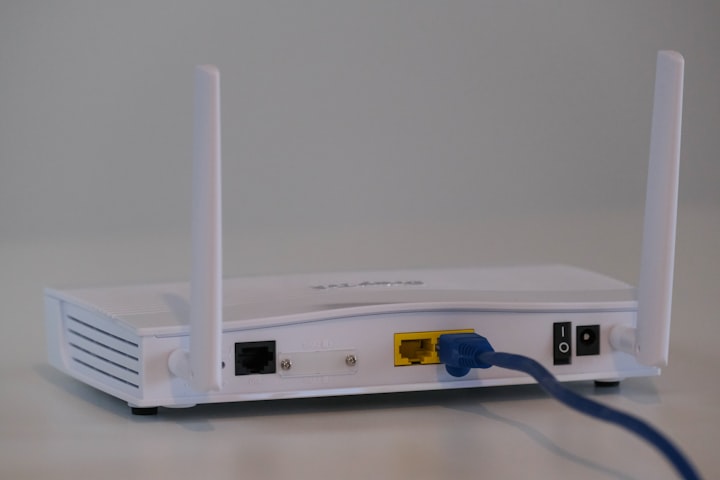Problems with WiFi? Here are 8 Ways to Fix It!
Mastering the Art of WiFi Troubleshooting

In today's digital era, WiFi connectivity plays a crucial role in our daily lives. However, we often encounter frustrating issues that hinder our online experience. From buffering during streaming to sudden disconnections, these problems can leave us seeking solutions.
In this informative guide, we will explore eight practical methods to address common WiFi challenges and enhance our connectivity.
1. Optimizing Router Placement
The placement of your WiFi router significantly impacts its performance. Ensure it is situated in a central location, free from obstructions like thick walls and metal objects that can weaken the signal. Elevating the router can also improve coverage and signal strength throughout your home or office.
2. Update Firmware and Drivers
Outdated firmware and drivers can lead to connectivity problems. Regularly check for updates on the manufacturer's website to improve performance and security.
Updating the WiFi drivers on your devices ensures compatibility and efficient functionality with the router. Additionally, ensure your computer or mobile device has the latest WiFi drivers installed to maintain compatibility and optimize performance.
3. Secure Your Network
Securing your WiFi network is essential to prevent unauthorized access and protect your data. Utilize strong encryption protocols like WPA2 or WPA3, and create unique passwords to deter potential intruders. Changing default passwords is vital, as they are commonly known and easily exploited.
4. Minimizing Interference and Optimizing Frequencies
Interference from neighboring WiFi networks and electronic devices can disrupt your connection. Use WiFi analyzer tools to identify less congested channels and switch to those for smoother performance. Also make sure to keep your router away from devices like microwave ovens, baby monitors, and Bluetooth gadgets that can interfere with the WiFi signal.
5. Upgrade Your Router
If your router is not up to date, upgrading to a newer model can improve your WiFi experience. Look for routers with better technology, such as dual-band or tri-band options, as they can handle more devices and reduce congestion.
Newer routers offer improved technology, faster speeds, and better signal range.

6. Extend WiFi Range with WiFi Extenders and Mesh Systems
In larger spaces or an office with areas that receive weak WiFi signals, WiFi extenders or mesh systems can be a real lifesaver.
WiFi extenders and mesh systems can help extend coverage and eliminate dead zones. WiFi extenders amplify the existing signal, while mesh systems create a network of interconnected devices to ensure seamless coverage throughout your home or workplace.
7. Prioritize Bandwidth Usage
Prioritizing bandwidth usage can enhance your connection's performance, especially when multiple devices are connected simultaneously. By enabling Quality of Service (QoS) settings on your router, you can allocate more bandwidth to critical tasks, ensuring a smoother experience.
8. Clearing Cache and Refreshing DNS
A hidden gem to further improve your WiFi experience is to clear cache and refresh DNS settings. Over time, devices accumulate temporary files and cache data, which can slow down your internet connection. By regularly clearing the cache on your computer, smartphone, or other devices, you free up valuable space and allow for smoother data retrieval.
Refreshing your DNS (Domain Name System) settings can help resolve connectivity issues and improve overall performance. Sometimes, DNS records may become outdated or corrupted, leading to delays in loading web pages. By refreshing the DNS, you tell your device to obtain the latest DNS information, leading to faster and more reliable connections.
Empowering Your WiFi Experience
WiFi problems can be frustrating, but armed with these eight effective solutions, you can take charge of your connectivity. Optimizing router placement, keeping firmware and drivers updated, securing your network, minimizing interference, considering router upgrades, using WiFi extenders or mesh systems, and implementing QoS settings can significantly enhance your WiFi experience.
The key to maintaining a reliable WiFi connection lies in understanding the unique challenges of your environment and implementing the appropriate solutions. By taking proactive steps to address WiFi problems, you can enjoy a seamless and efficient online experience, boosting productivity, and minimizing frustration.
So, the next time you encounter WiFi troubles, you'll be equipped with the knowledge and tools to overcome them. Remember that some of these simple tips can be a game-changer in maintaining a smooth and optimized WiFi experience. Happy surfing!






Comments
There are no comments for this story
Be the first to respond and start the conversation.